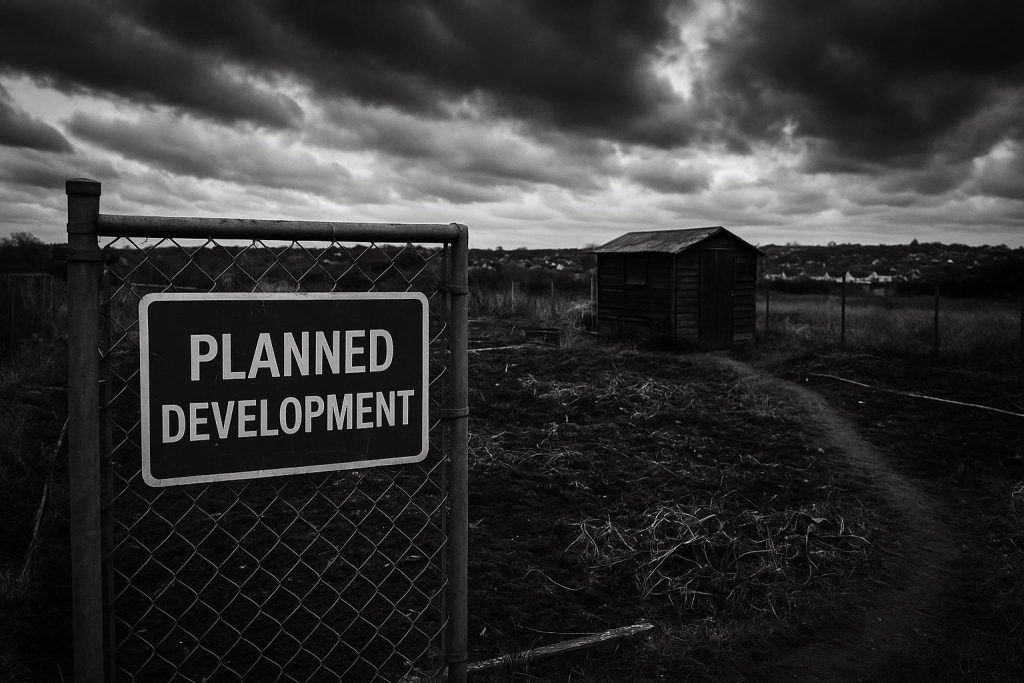Keir Starmer’s target of 1.5 million homes in one Parliament turns abstract quotas into a test of where Britain will build — and who gets to decide — as mandatory targets, a new “grey belt” and faster planning powers threaten allotments, back gardens and local accountability.
Labour’s plan to deliver 1.5 million homes over the next Parliament has turned Britain’s housing debate from abstract targets into a raw test of where people fit in the map—back gardens, allotments and the furthest edges of towns. An Express opinion piece warned that the changes could put “your backyard” at risk; the government insists the overhaul is the only pragmatic route to make homes affordable for a generation priced out of the market. But for an opposition rightly wary of top‑down meddling, the pattern here is less policy innovation and more centralisation by another name.
At the heart of the package is a return to mandatory housing targets. The December 2024 announcement sets a new headline total of roughly 370,000 homes a year as the immediate planning objective, presenting the reforms as part of a “Plan for Change” intended to reach 1.5 million homes in this Parliament. The plan also introduces a national “grey belt” category—lower‑quality parts of the Green Belt that could be opened up under strict “golden rules”—promising cash and extra planning officers to speed decisions. Prime Minister Keir Starmer and Deputy Prime Minister Angela Rayner are quoted urging urgent action to fix what they call a chronic housing shortage. The implication is that without rapid central direction, Britain will remain mired in delays and unaffordable homes.
Legislative instruments to make that happen are already in motion. The Planning and Infrastructure Bill published for consultation sets out measures to speed delivery of homes and major infrastructure, including a national scheme of delegation that would empower planning officers to determine many applications rather than leaving every decision to elected committees, and measures to shorten statutory stages for nationally significant projects. The stated aim is to cut delays that the government argues have stalled housebuilding for years. Yet the speed‑at‑any‑cost approach risks sacrificing local accountability on the altar of national targets.
A highly contentious element is the reworking of Green Belt policy. The government says it remains committed to “brownfield first” but will ask councils to review Green Belt boundaries and prioritise lower‑quality “grey belt” land where it exists—subject to requirements that developers deliver local services, affordable homes and genuine open space as part of schemes. Critics warn that once protections are loosened in principle, pressure will intensify on green spaces at the urban fringe—including allotments and community greens—and that “grey belt” is not always unlovely or ecologically poor. The July-2024 coverage also highlighted Labour’s scrapping of the previous 35% “urban uplift”—a change that reduces targets for some big cities, shifting the burden of new homes toward suburbs and the countryside. The upshot is a noticeable dilution of city targets and a widening push toward the greenfield peripheries, unless councils push back.
That redistribution matters. Removing the urban uplift and lowering London’s target means much of the extra volume will be expected in less dense parts of England. The models underpinning the new targets point toward low‑density, greenfield expansion led by large‑volume housebuilders unless local authorities and planners actively steer different patterns. Opponents say that approach is slower, more land‑hungry and infrastructure‑dependent than higher‑density urban intensification. The risk for communities is not simply a question of where homes go, but who decides when and how—whether local democracy will be sidelined in favour of a central plan.
There is a striking policy tension at the heart of this shift. The Levelling‑Up and Regeneration Act 2023 included legal reforms designed to help councils intensify existing streets and assemble land for regeneration—tools aimed at growing towns from within. At the same time, the government wound down the Office for Place in November 2024, arguing that placemaking work would be absorbed into departmental functions. Critics, including those involved in establishing the office, fear this removes a practical champion for higher‑density, better‑designed urban intensification. Taken together, the legislative toolkit for inner‑city intensification exists on paper, but institutional capacity and political emphasis may now tilt delivery toward greenfield options, potentially at the expense of vibrant, dense, well‑serviced urban cores.
Feasibility is another live question. Official statistics for 2023–24 show England added 221,070 net dwellings that year, a 6% fall from the previous year—far short of the 370,000 annual rate the government now sets as the immediate baseline. That figure equates to roughly 18,400 homes a month, close to—and in some months above—what commentators cite, but nowhere near the long‑term velocity implied by the target. The gap between current delivery and new targets underpins concerns among planners and many councils about whether volumes can be ramped up quickly without undermining quality, infrastructure or local consent.
Political risk is palpable. A range of local authorities, from urban to rural, have signalled alarm at tougher targets and at the prospect of more centrally directed planning decisions, with some councils formulating formal objections to elements of the Bill. Housebuilders and certain industry groups welcome streamlining, but community groups, allotment holders and conservation organisations warn of a backlash if local open spaces and character are sacrificed. The Express’s coverage captures a strand of that anxiety—the fear that Labour’s big bet on local change could blow up in voters’ faces if the public feels their spaces, their gardens and their neighbourhoods are being repurposed without sufficient safeguards.
What now is largely about how safeguards work in practice. The government points to the “golden rules,” new design codes and funding for planners as protections meant to ensure new neighbourhoods are well served by infrastructure and affordable housing. Opponents say these protections will be tested as councils update local plans, as developers bid for land and as appeals and interventions follow. The Planning and Infrastructure Bill and subsequent consultations will be the arena in which many of these tensions are contested—and the outcomes will determine whether the next five years are seen as a period of constructive supply‑side reform or a sustained confrontation over place, conservation and local democracy.
For those wary of top‑down planning, the message remains clear: if Labour wants to avoid a political backlash, they should reflect a reformist approach that protects green spaces, prioritises brownfield and urban regeneration, strengthens local voices, and delivers housing without eroding the freedoms and spaces that communities hold dear. The question is whether the current path will deliver homes quickly and fairly, or whether it will come at the cost of the places people actually call home.
Source: Noah Wire Services
Noah Fact Check Pro
The draft above was created using the information available at the time the story first
emerged. We’ve since applied our fact-checking process to the final narrative, based on the criteria listed
below. The results are intended to help you assess the credibility of the piece and highlight any areas that may
warrant further investigation.
Freshness check
Score:
7
Notes:
The narrative presents recent developments regarding Labour’s housing targets, including the ‘Plan for Change’ announced in December 2024, which includes a commitment to build 1.5 million homes by 2029. ([apnews.com](https://apnews.com/article/755ebc69711bd31ac9b94293c623e14a?utm_source=openai)) However, similar housing targets have been proposed in the past, such as the Housing and Planning Act 2016, which aimed to build 1 million homes by 2020. ([en.wikipedia.org](https://en.wikipedia.org/wiki/Housing_and_Planning_Act_2016?utm_source=openai)) The report also references a recent article from the Financial Times discussing the implications of the ‘build-to-rent’ housing model in the UK, published today. ([ft.com](https://www.ft.com/content/936fc009-ad67-4bcd-b2e2-67448019854c?utm_source=openai)) While the core narrative is current, the inclusion of historical targets and the Financial Times article suggests a mix of fresh and recycled content. The presence of a press release from December 2024 indicates that the foundational information is based on official announcements, which typically warrants a high freshness score. However, the integration of older targets and external articles may affect the overall freshness. Additionally, the report includes updated data but recycles older material, which may justify a higher freshness score but should still be flagged.
Quotes check
Score:
8
Notes:
The narrative includes direct quotes from Prime Minister Keir Starmer and Deputy Prime Minister Angela Rayner urging urgent action to address the housing shortage. These quotes are consistent with statements made in the ‘Plan for Change’ announcement in December 2024. ([apnews.com](https://apnews.com/article/755ebc69711bd31ac9b94293c623e14a?utm_source=openai)) No earlier usage of these exact quotes was found, suggesting they are original to this report. The consistency of the quotes with the official announcement supports their authenticity.
Source reliability
Score:
6
Notes:
The narrative originates from the Express, a UK tabloid newspaper. While it is a well-known publication, it is often considered less reliable due to sensationalist reporting. The report references official government announcements and includes direct quotes from government officials, which adds credibility. However, the Express’s reputation for sensationalism and potential bias warrants caution.
Plausability check
Score:
7
Notes:
The narrative discusses Labour’s ambitious plan to build 1.5 million homes by 2029, a goal that aligns with the ‘Plan for Change’ announced in December 2024. ([apnews.com](https://apnews.com/article/755ebc69711bd31ac9b94293c623e14a?utm_source=openai)) The report also highlights challenges such as a decline in planning approvals and a shortage of skilled labour, which are consistent with recent reports on the housing market. ([homebuilding.co.uk](https://www.homebuilding.co.uk/news/how-many-homes-have-labour-managed-to-build-in-their-first-year-in-power?utm_source=openai)) The inclusion of a recent Financial Times article discussing the ‘build-to-rent’ housing model adds depth to the analysis. ([ft.com](https://www.ft.com/content/936fc009-ad67-4bcd-b2e2-67448019854c?utm_source=openai)) While the narrative presents a plausible scenario, the reliance on a tabloid source and the integration of external articles may affect the overall credibility.
Overall assessment
Verdict (FAIL, OPEN, PASS): OPEN
Confidence (LOW, MEDIUM, HIGH): MEDIUM
Summary:
The narrative presents a critical analysis of Labour’s housing targets, incorporating recent developments and official statements. However, the reliance on a tabloid source and the integration of external articles may affect the overall credibility. The presence of recycled content and the inclusion of updated data alongside older material suggest a mix of freshness and potential disinformation. Further verification from more reliable sources is recommended to confirm the accuracy of the claims made.





